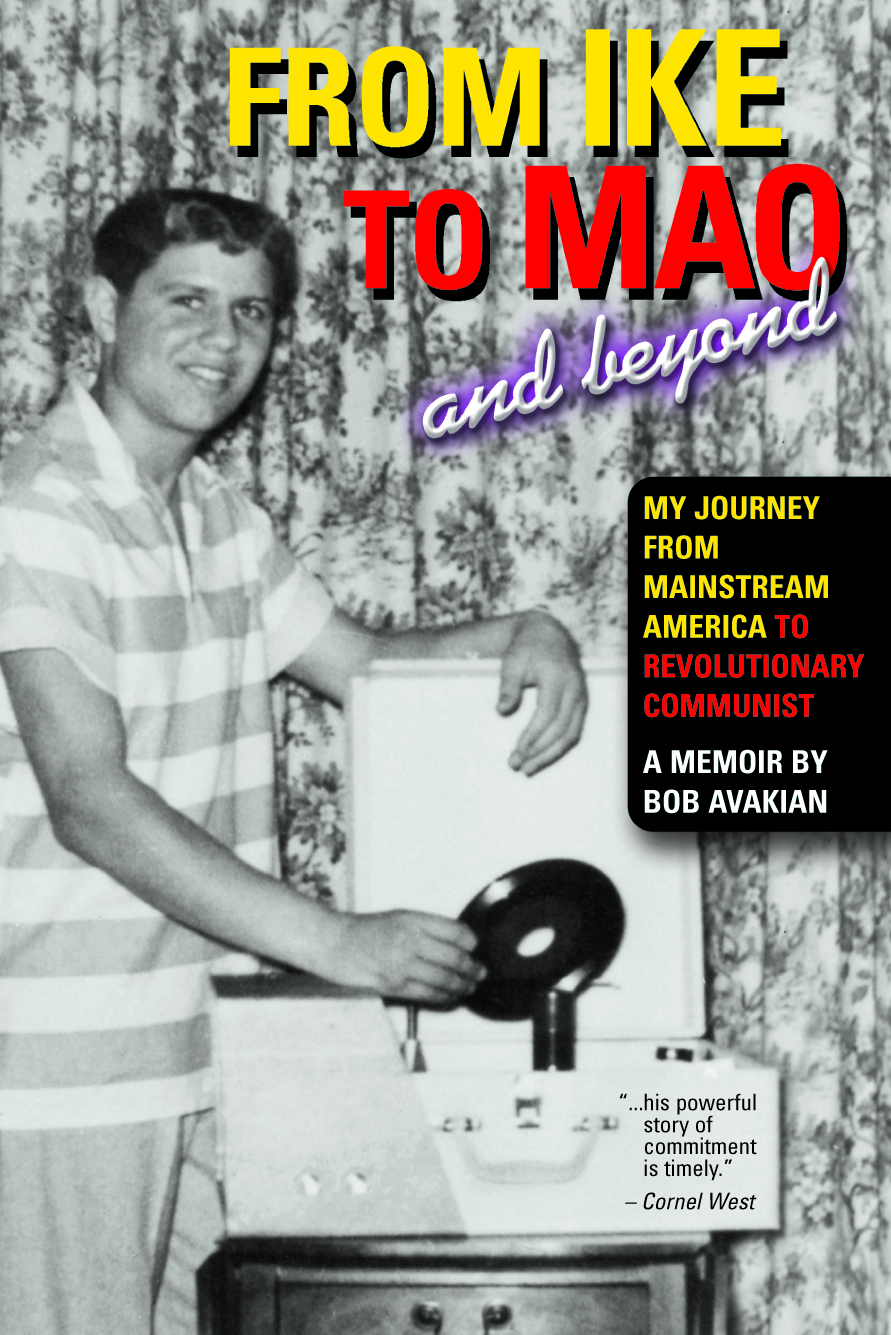50th Anniversary of People’s Park
When the Berkeley Pigs and the National Guard Used Tear Gas, Buckshot, and Billy Clubs to Crush…a Park (!)
AND THE PEOPLE FOUGHT BACK
| revcom.us
This month marks the 50th anniversary of the Battle for People’s Park. In late April 1969, a group of hippies and activists began building a park on unused land owned by the University of California at Berkeley. Berkeley at that time was a major center of rebellion against the U.S. war in Vietnam, the oppression of Black people, and U.S. imperialism overall, and, like youth and students elsewhere, was marked by a broad culture of rejection and defiance of the authorities.
As one account put it, “Several hundred volunteers came to People’s Park on Sunday, April 20. From the start, the park attracted a cross-section of straights, political radicals, hippies and street people. Between April 20 and May 15, 1969, thousands of people spontaneously transformed the eyesore of a vacant lot into a pleasant, relaxing and slightly chaotic and messy park. Volunteers laid sod, planted flowers and trees and bushes, built an amphitheater, laid out winding brick paths, and installed swings and play structures.”
In retaliation, on May 13, the university chancellor announced that the university would build a fence around the park and begin construction of a parking lot.
At 4:45 am on May 15, 50 people settled around a campfire in the park as darkness began to lift. Berkeley and campus police arrived soon after to clear the park, dressed in flak jackets and armed with shotguns. As news of the new fence hit the campus, a noon rally in support of the Palestinian struggle that was going on at Sproul Plaza turned its focus to the fight for People’s Park. As chants of “Let’s take the park!” rose up, 3,000 students and others marched out of the campus and down Telegraph Avenue.
At the park, the protesters began tearing down the fence. Bottle and other objects were reportedly thrown at the 180 cops now occupying the park. The Alameda County sheriff led some 800 pigs from various jurisdictions to come down brutally on the protesters. They beat people with batons, used massive amounts of tear gas, and fired at people with lethal “00” buckshot from shotguns. One man, James Rector, who was watching what was going on from a rooftop, was hit with one of the shots and later died from his wounds. Many others were injured.
But as vicious as the crackdown was, the protesters responded with even more determination to fight for the just demand for the park and against the forces of repression. The people resisted in the streets, courageously and fiercely. Tear gas grenades were thrown back, a police car was overturned, a fire hydrant turned on the advancing police.
That night, Ronald Reagan—then governor of California—further escalated the repression by declaring a state of emergency in Berkeley and calling in thousands of National Guard troops. Over the next few weeks, Berkeley was under the occupation of National Guard forces, who attacked any gathering of people. When several thousand people gathered at Sproul Plaza on May 21 to hold a vigil for James Rector, they were hit with tear gas—including a type used by the U.S. troops in the war in Vietnam—sprayed from a military helicopter flying over the campus.
These police and National Guard attacks were met with broad outrage. In solidarity with the People’s Park protesters, 177 university faculty members declared they were “unwilling to teach until peace had been achieved by the removal of police and troops.” On May 30, some 30,000 people marched past the barricaded People’s Park and through the city streets in protest.
This week we are running an excerpt from Bob Avakian’s memoir, From Ike to Mao and Beyond: My Journey from Mainstream America to Revolutionary Communist, which gives a living sense of the struggle and how revolutionary communists of the time related to it.
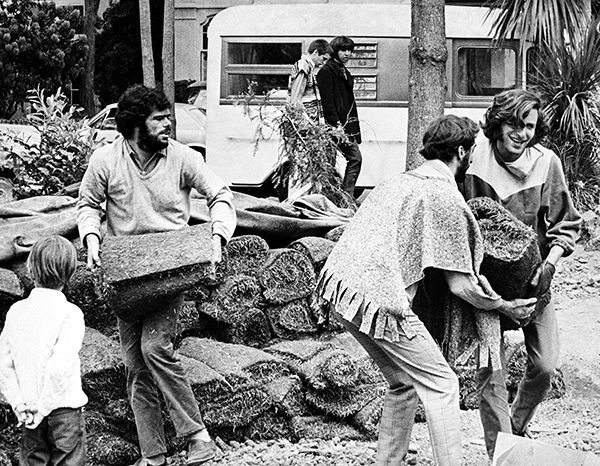
In April 1969, a group of hippies and activists began building what came to be called People’s Park on unused land owned by the University of California, Berkeley. Here, people laying sod in the park—three days before massive May 15 police attack on people protesting for the park.
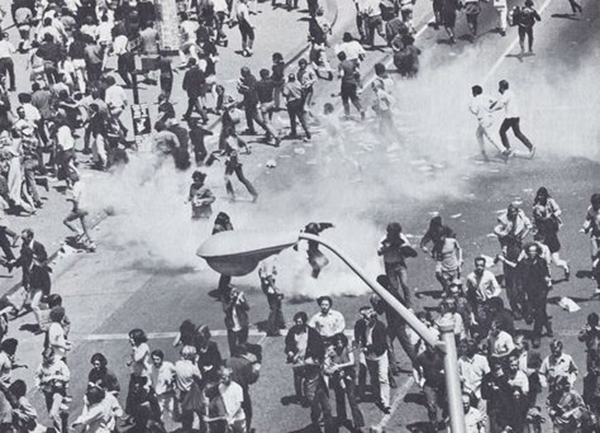
Protesters battle back against police tear gas attack during the battle for People’s Park, May 1969. Police and then National Guard routinely used tear gas to break up the daily roving demonstrations. But people refused to be turned back.
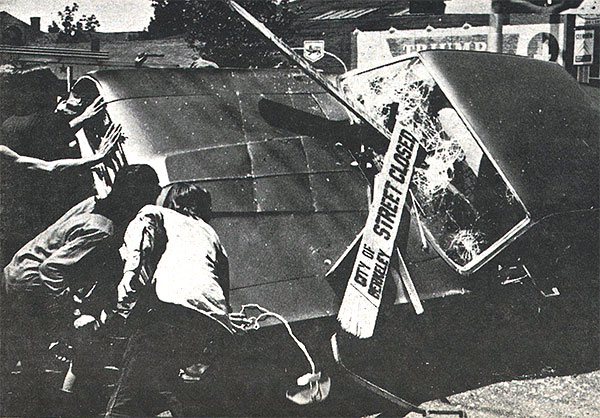
In the face of the riot police beating people, shooting “00” buckshot from shotguns, and firing massive tear gas, many People’s Park protesters defended themselves and fought back courageously.
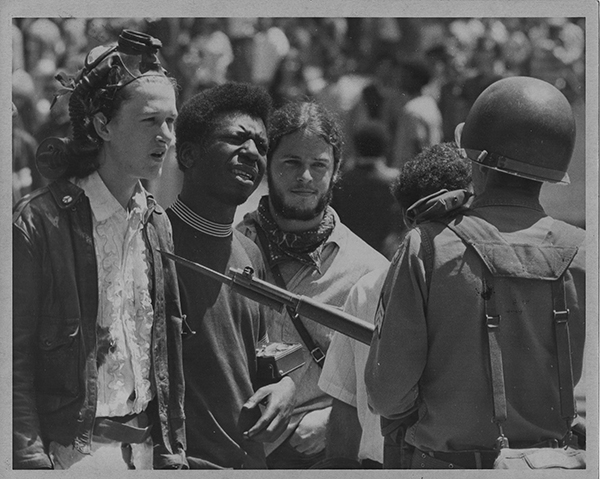
During the battle for People’s Park, protesters confront National Guard troops who were mobilized by then California governor (and future U.S. president) Ronald Reagan to shut down the protests. A year later, in the face of continuing campus antiwar protests, Reagan declared, “If it takes a bloodbath to silence the demonstrators, let’s get it over with. No more appeasement.”
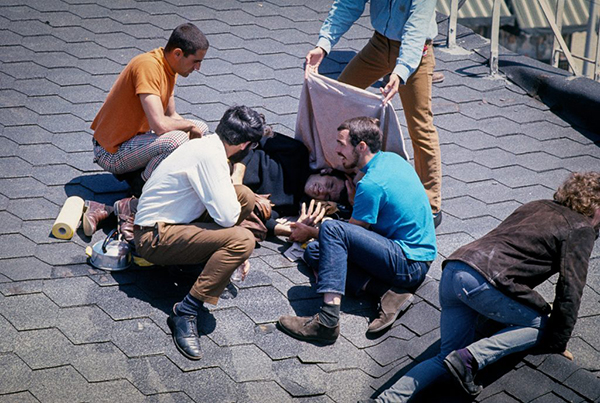
James Rector lies gravely injured on a rooftop overlooking Telegraph Ave. after he was hit with buckshot fired by riot police on May 15, 1969. He later died from his wounds. Many other protesters were injured by the police. @1969 by Nacio Jan Brown

Front page headline of the student newspaper at University of California, Berkeley, on May 16, 1969.
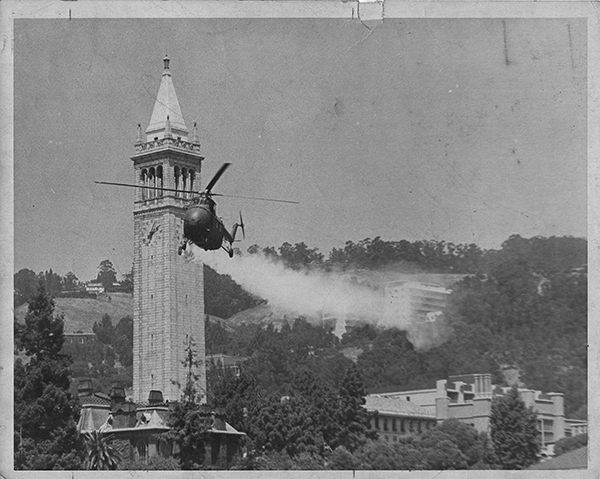
National Guard helicopter flying over the UC Berkeley campus and spraying airborne tear gas, which spread over the whole city, May 1969. Among those targeted by the helicopter gas attacks were people who had gathered peacefully in a memorial for James Rector, who was killed by the police in the May 15 attack. @1969 by Nacio Jan Brown

National Guard troops carrying bayonet rifles stand in formation at the main entrance to the university campus to prevent a protest rally, May 22, 1969.
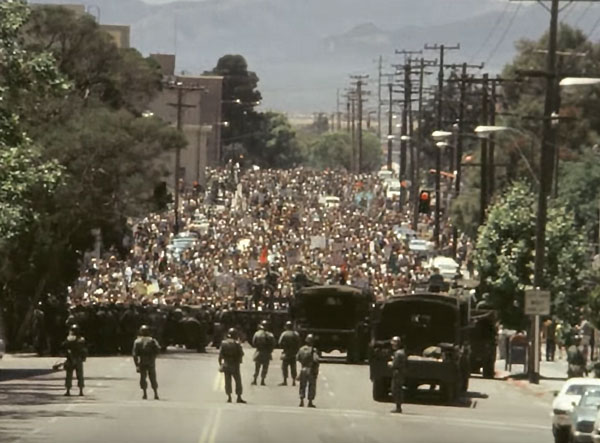
As Berkeley continued to be under lockdown and National Guard occupation, tens of thousands of people marched through the streets and past People’s Park in protest, May 1969.
Get a free email subscription to revcom.us:


